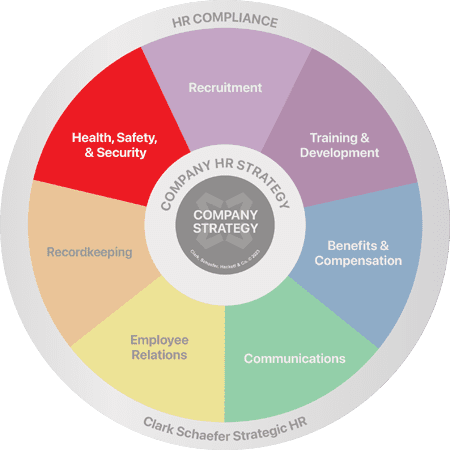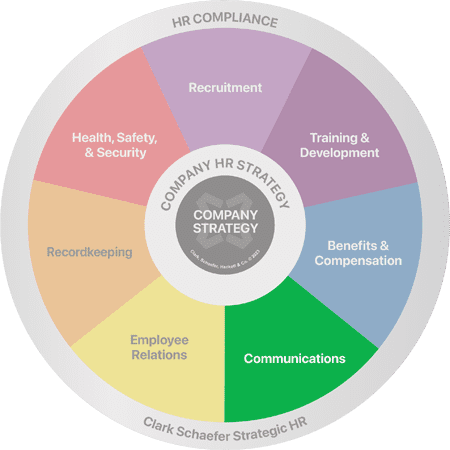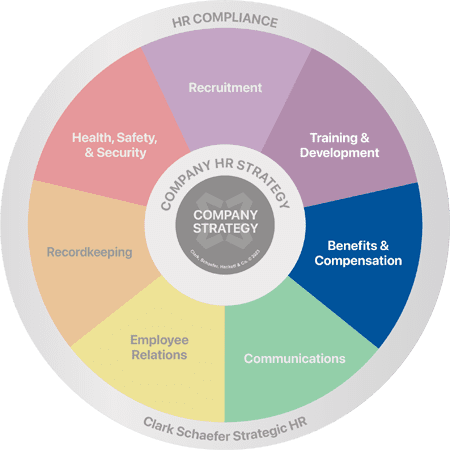Leading Change Amidst a Crisis (Part 2 of 2)
Last Updated on October 23, 2020 / Health, Safety & Security
Leader performance during a crisis sets the tone for the entire organization, and the current pandemic has tested leaders like no other. How leaders respond or fail to respond is key to future success. Leaders who remain calm, encourage input, take an open-minded approach and evaluate what the company can do better post-crisis are more likely to survive and shine. As we continue our exploration of key areas of leading change amidst COVID-19, we’ll discuss topics geared toward moving through and out of this crisis.
Psst! In case you missed it, be sure to read Leading Change Amidst a Crisis, Part 1.
Leading Change with Recognition
As we work through the challenges related to COVID-19, there have been many heroes that have risen to the surface. Healthcare providers, emergency responders, grocery store workers, manufacturers, and countless other essential workers have gone above and beyond the call of duty during a time of abnormal health risks and stress. Internally, your organization has most likely experienced some unsung heroes as well. There is no way to over-emphasize the importance of employee recognition, both during this crisis and once things are under control. Recognizing your employees’ hard work and dedication will do a lot to feed their self-esteem and desire to continue to shine, particularly during stressful times.
In some cases, employers spend a good portion of their time focusing on employees with behavioral or performance problems. Most leaders have been faced with these challenges, and those behaviors must not go unchecked. However, it’s important to purposefully take time to recognize the behaviors that you want to foster and see continued. Be sure to recognize your top performers as well as those behind the scenes in less public roles who are doing a great job in contributing to your organization’s success. While many don’t require hand-holding, human beings value respect and admiration from those around them – this includes their peers and co-workers.
Some ways to ensure that your employees feel appreciated and valued include:
Involve your employees in important decisions and strategic planning of the organization. Solicit their ideas about the direction you’re headed. Discuss the future of the company with them, along with their place within it. Talk about the roles they play and how they contribute. Consider what they have to say and give them credit for their input. By doing all this, you show your employees that they’re important to you and essential to the success of the organization. In addition, your employees will feel more invested in the decisions and strategic plan because they helped to develop them.
Regularly recognize employee achievements. Don’t wait for performance reviews or end-of-year events to give employees the recognition they deserve. Use whatever electronic communication system you have in place to speak well of your employees and their achievements regularly. Perhaps institute a peer-recognition program in which employees can praise each other for jobs well done and identify behaviors that led to their success. At Strategic HR, we use the “impressions” feature in our HRIS system. Here, employees can recognize each other for how they have lived our company values including collaboration, competence, communications, and more.
Invest in your employees. Offer opportunities for advancement. If promotions aren’t possible, then help employees level-up their skills and learn new ones. Provide coaching and training sessions — or cover the costs of outside services for this type of development. If your budget is tight, allow internal mentoring opportunities between team members and those in senior-level positions. Employees will feel appreciated when they can see that you care about their professional development and future success.
Say “thank you” every day. How leaders and managers behave sets the tone for the workplace. Regularly saying “thank you” fosters a more welcoming and respectful environment, and it also helps employees feel that they are valued. Appreciation can be given in many ways, but whether you show it through engagement, involvement, investment, or recognition, you’ll be making gratitude a key value of your workplace culture.
Planning for Future Workforce & Crisis
Nobody can see what the future will look like, but we do know that change is constant. Organizations that anticipate and plan for change are more likely to navigate well through challenges. Thus, when a crisis is looming in the shadows, you can accelerate preparations and proactive movement, rather than reacting. As Tony Robbins says, “all business owners want to be the disruptor, not the disrupted.” Keep your eye on similar players in the market, and even those outside of your operating space, to consider creative and innovative ways of preparing and doing business. For example, it’s clear that 2020 has presented more unique challenges and crises in the first six months. And while it’s left a lasting impact, we can take a look at those around us for ideas and creative approaches to navigating a crisis that can apply even when we’re no longer in the midst of a pandemic.
In this unique time, leaders should meet with their teams to review and develop workforce plans through reflective assessments and brainstorming. Planning for the future requires an in-depth look at the people and the business model that serve as the pillars of the business.
People are your most important assets. Without them, the business wouldn’t be in operation. In order to lead your employees to achieve your organizational goals and objectives, you have to be an effective communicator. When having open conversations with your team, always consider:
- Foster a collaborative workforce. You will be grateful for what can be accomplished when you all work together.
- In your conversations, have an open mind when approached with feedback. Feedback can come from both above and below you – keep an ear open from both directions.
- Should you receive negative or constructive feedback (either about your leadership or the business operations), determine the reason for it and take it in stride. It is an opportunity to learn to be better next time.
- Don’t be afraid of risks or the unknown. Should a team member present a new or unfamiliar path, be willing to explore the challenge. It’s too easy to stay in your comfort zone, but that is not always going to get you where you want to go.
- Be aware of how you are using your time. These conversations should be structured to best reflect on challenges and opportunities for your people and your business, rather than spent only focusing on frustrations or worries. Time management is a learned skill but can be mastered.
Based on your organization’s experiences with COVID-19, it may be an opportunity to alter your assumptions with your business model. Consider areas such as:
- Different or additional revenue streams: i.e., workforce budget assumptions.
- Changes in customer expectations: i.e., differences in product or service delivery.
- Changes in workflow: i.e., process or task changes.
- Changes in roles: i.e., streamlined roles, role enhancements, combining positions.
- Changes in skill sets: i.e., cross-training or teaching additional skills—time management, technology, or process steps.
- Changes in succession planning assumptions: i.e., knowledge, skills, and abilities (KSA’s) needed for those in the “pipeline.”
Based on the business and industry you are in, make a list of your potential vulnerabilities or those things that could go wrong that would cause a stir among the media and the public. Once identified, leaders can plan the best way to react to each unique occurrence. For example, if you are a school system, how could you respond if a bus driver wrecked the vehicle while intoxicated? If you are a restaurant, how do you respond to a case of salmonella poisoning? If you are a manufacturer, what are the potential consequences a product failure may have on users and their safety? If you are a bank, how would you respond if there was a breach of security exposing the personal financial information of a large group of your customers?
This role play of scenarios will allow companies to put plans in place so they can be prepared and fast-acting once a catastrophic situation occurs. Pre-planning for worst-case scenarios allows quicker response times and may prevent employee, community, and media backlash. So, let’s prepare for the worst while preparing to put the organization’s best foot forward.
Leading in the best of times can be a challenging, yet rewarding, role to play. Leading throughout a crisis and global pandemic presents unique learning curves and opportunities for leaders to navigate. But by doing so with effective communication, brand awareness, recognizing those around you, and keeping an eye on the horizon, leaders can come out on the other side of these trials as stronger, effective, successful professionals.
Special thanks to Angela Dunaway, PHR-SHRM-CP, and Melissa Dern for contributing to this month’s Emerging Issues in HR.
Executive/Leadership development will impact the bottom line for your business. It’s more important than ever to optimize your operations during the pandemic. Strategic HR can help with your leadership and HR strategy through COVID-19. For more information, please visit our HR Strategy and Training & Development pages, or simply contact us – we’d love to hear from you.








